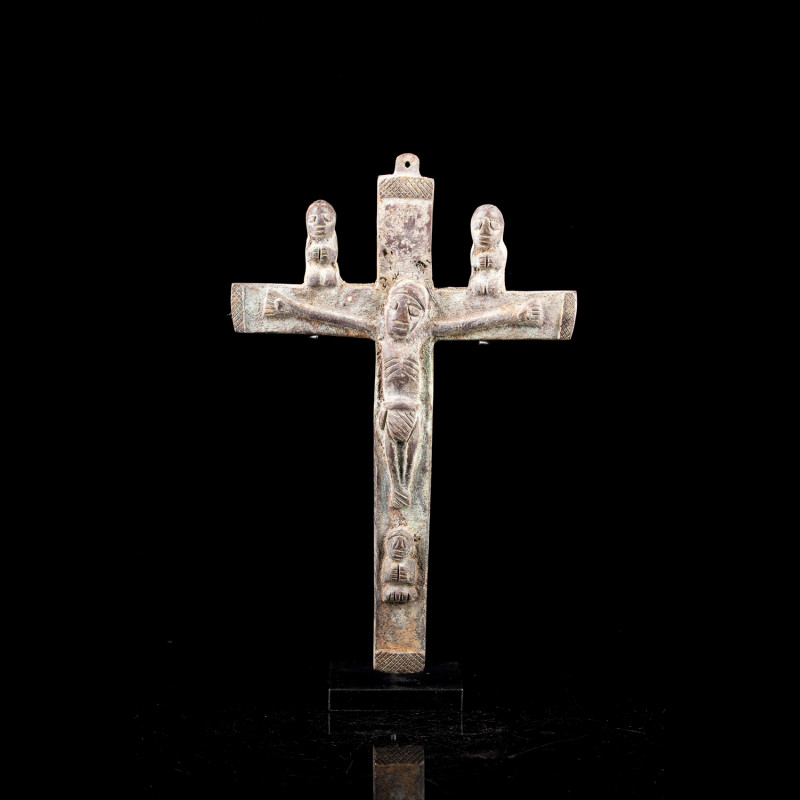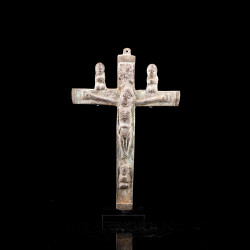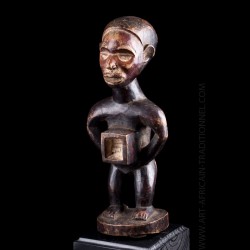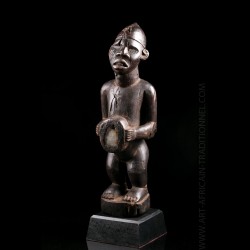












Kongo sculptors and artists gradually incorporated Christian iconography into their traditional works.
Thus, this Christian crucifix is the result of the fusion with Kongo emblems of the afterlife, protection and power and the European cross. The nkangi kiditu crucifix (meaning “the protective Christ” or “the bound Christ”) was born. Kidtiu nkangi crosses were used as objects of prestige and power.
Kongo chiefs ordered this type of object as symbols of their social rank and used them during mabondo ya nkangi enthronement ceremonies.
In addition, these African crucifixes were said to have a protective power against witchcraft, disease, drought, and at the same time ensured the fertility of women and the earth.
It was in 1493 that, for the first time, the Bakongo kingdom made contact with the Portuguese when the explorer Diogo Cão, accompanied by Catholic priests, explored the Congo River.
Commercial partnerships were set up following this meeting. Thus, the exchange of goods and merchandise led to Christianization.
The first conversions of Kongo chiefs took place some time later.
Data sheet
You might also like

Kongo sculptors and artists gradually incorporated Christian iconography into their traditional works.
Thus, this Christian crucifix is the result of the fusion with Kongo emblems of the afterlife, protection and power and the European cross. The nkangi kiditu crucifix (meaning “the protective Christ” or “the bound Christ”) was born. Kidtiu nkangi crosses were used as objects of prestige and power.
Kongo chiefs ordered this type of object as symbols of their social rank and used them during mabondo ya nkangi enthronement ceremonies.
In addition, these African crucifixes were said to have a protective power against witchcraft, disease, drought, and at the same time ensured the fertility of women and the earth.
It was in 1493 that, for the first time, the Bakongo kingdom made contact with the Portuguese when the explorer Diogo Cão, accompanied by Catholic priests, explored the Congo River.
Commercial partnerships were set up following this meeting. Thus, the exchange of goods and merchandise led to Christianization.
The first conversions of Kongo chiefs took place some time later.


